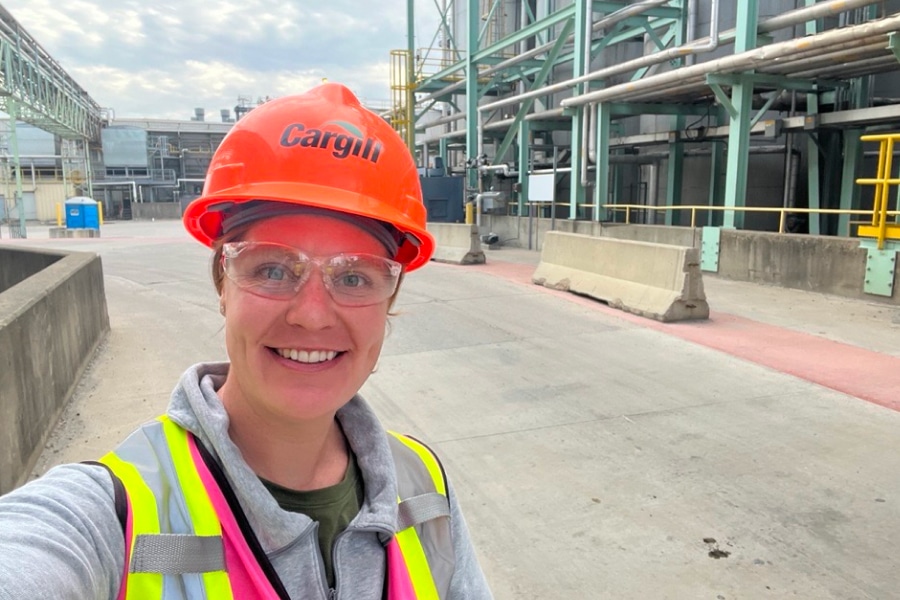Brendan Hasty started creating YouTube videos at the beginning of the pandemic as a way to showcase his unique insight into structural engineering. After finding himself spending more time at home, he noticed there was a lack of high-quality engineering content on the platform — and decided to put his newfound time to good use.
“There aren’t many people in the space, especially people providing good quality engineering advice from a point of view that someone’s quite experienced. There are these younger guys and they’re giving some advice out. Then there are some guys that are providing the technical side in a lot of detail. But there’s no one providing that intermediate side,” Brendan says.
“We were interested to see how it would go. At the start, we didn’t realise we would make any money from it. We were just trying to help out the community and build something there.”
And help the community he has. Over the past two years, Brendan has amassed more than 1 million views on his videos and established a thriving channel where he shares tips for young engineers, design approaches and analyses of engineering fails.
From structural engineer to YouTube content creator
In the beginning, Brendan started out recording videos on his phone. His first upload, “What is Structural Engineering all about”, was a short video geared at explaining is the profession from the perspective of a practising structural engineer, and some of the skills aspiring engineers will need.
Since then, he’s made close to 100 videos on a variety of topics, including the golden rules for designing steel frames and a holiday-themed video exploring the structural design considerations that would be required for Santa to land on a roof. But one of his most popular videos has to be “A day in the life of a structural engineer”, which has racked up more than 200,000 views.
eflecting on that video’s success, Brendan says it’s mostly due to the content’s accessibility.
“The reason why people like that so much is because people are just interested in what we do,” he says. “I think a lot of time there’s a misconception about what we actually do in the day or what engineers actually do. … Some people were just obviously curious, some people in the industry wanted to see how other engineers work, then there are other people starting out their career and wondering what it’s going to be like when they graduate.”
Even if his videos don’t get hundreds of thousands of views, Brendan says the process of creating content is invaluable because it helps him learn on a daily basis.
“Even if people don’t watch it, I learn a lot through creating this content. Always keep learning,” he says.
That’s one of the key things he hopes his videos allow viewers to do as well: to learn and challenge themselves. For Brendan, being an engineer is a lifelong learning journey that starts at university and never ends — not even at his level as associate director at WSP.
“A lot of people think that once they’re finished with university, we don’t need to learn a lot. But you’ve just started your journey,” he says. “You barely know anything when you’ve graduated. They only taught you how to think about it or how to analyse a structure, where designing a whole building is a completely different skill set that they haven’t even approached or taught you how to do.”
Communication is everything
According to Brendan, one of the most surprising benefits to come out of creating videos is that it’s allowed him to develop his communication skills — particularly his speaking skills.
“It doesn’t really matter how good you are at engineering, if you can’t communicate to the people you’re talking to, the numbers that you’ve actually put down on the page are really useless,” he says. “If they can’t build it or use the information that you have, then what good are you?”
In fact, the process has been so beneficial that Brendan recommends everyone try it so they develop greater awareness around how they communicate.
“You realise how you’re talking, the speed you’re talking at and the type of language that you’re using. So it’s really useful for anyone that wants to communicate. Record yourself, even if you’re not going to use it on a YouTube video,” he urges. “Listen back and see how you’re physically presenting yourself, which will be highly beneficial for you. And that feedback, even if it’s a bit cringy when you’re hearing yourself, is definitely worth the effort.”
The same goes for writing. While Brendan says that students learn how to write in university, it’s not the same type of writing skills that they’ll need to use in the real world.
“In university, you’re writing more towards the academic side, whereas in the industry, you’re talking to people that are either builders or architects and they have different skill sets. You’ve got to really know who your audience is and structure your communication to them,” he says.
It was this thought that spurred on another video in his collection: Writing for an engineer. This handy video is packed full of helpful information for engineers looking to improve their written communication skills, including tips on identifying the passive and active voice to how to review your writing.
Getting started with content creation
Even if it means more competition for him, Brendan hopes his story will inspire others in the industry to join the YouTube content creator community.
For aspiring YouTubers, Brendan recommends keeping the content as varied as possible. This could be through creating content on different topics or catering it to a global rather than local audience.
“You could be more global because everything with engineering is quite general. Physics doesn’t change around the world,” he says. “If you’re sticking towards the basic principles of engineering and how you’ve got to the answers and the thought process that you went through to get, that’s definitely beneficial. And by aiming for a bigger market, you can get as big an audience as possible for your content.”
But his biggest tip for anyone looking to start is to do just that: hit record on their phone and use free editing software to learn the ropes.
“Your first couple of videos will be very cringe-worthy, but it really doesn’t matter. If you’re worried about how good you’ll be, you can go back and watch and realise just how bad mine were,” he laughs.
Shaping the next generation of engineers
So is Brendan ready to quit his day job to become a full-time YouTuber? Not yet — but he’s going to keep creating content and building a community as part of his broader contribution to the industry.
“I think a lot of people that have got to my level of experience are doing a lot of other things,” he says. “Everyone’s really busy. I’m flat out at work as well, but I think it’s definitely beneficial to the industry to help the up-and-coming engineers with knowledge that’s highly valuable to them.”












